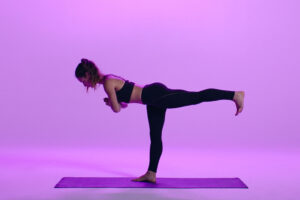Blue light glasses may help alleviate symptoms associated with too much screen time such as eye strain, headaches, dry eyes and mood disorders; however, making lifestyle adjustments such as using the 20-20-20 rule and taking screen breaks also play a part.
Maintaining clean blue light glasses is of utmost importance. Handling them throughout the day creates fingerprints and smudges from contact with skin oils; further adding to their cleanliness.
Increased Focus
No one disputes the fact that prolonged staring at digital screens can result in eye strain, dry eyes and headaches. While blue light glasses may help mitigate some of these effects, other strategies for improving eye health could include taking frequent breaks from screens, adjusting screen settings for reduced glare and practicing good posture.
Blue light glasses don’t offer much evidence in support of their effectiveness; however, many find them beneficial in alleviating symptoms associated with digital overexposure and improving sleep quality by blocking out blue light that signals to your body that daytime is approaching; helping you get more restful slumber.
Reduced Eye Strain
Eye strain is a result of spending too much time staring at screens, often leading to headaches, blurry vision and dry eyes. Wearing blue light glasses may help alleviate some discomfort associated with eyestrain.
Blue light filters may help reduce the risk of sleep disturbances by blocking blue light that disrupts our circadian rhythm and tells our bodies when it is time for rest or wakefulness.

However, it is important to keep in mind that blue light glasses have not been proven effective by extensive studies. Other ways of relieving eye strain include taking frequent breaks from screens and devices to reduce glare as well as using drops for dry eyes. By taking these steps and taking into consideration your lifestyle needs and lifestyle preferences like lens material and coating options available as well as frame style/fit considerations you can find the appropriate blue light glasses.
Better Sleep
Sleep is essential to living a healthy life. Blue light blocking glasses may be useful in supporting better rest by mitigating the impact of digital screens on your circadian rhythm (the body’s natural sleep-wake cycle).
Blue-light filters alter colors by shifting hues towards yellow to reduce screen glare and mitigate any negative impacts from blue light on eyes, keeping melatonin production on schedule for better sleep.
Though blue light filter glasses may offer many advantages, it is important to remember that they cannot solve all sleep-related problems on their own. To experience restful slumber it’s essential to follow other principles of good sleep hygiene such as exercising early in the day, drinking tart cherry juice before bed and dimming lights an hour beforehand – blue-light glasses may provide another helpful addition to this routine.
Increased Energy
Blue light from screens has been shown to disrupt our natural melatonin production and alter our sleep-wake cycle, so wearing blue light glasses before sleeping helps minimize their negative effects and promote restful slumber – leading to greater energy during the day and serving as a cornerstone of eye health and overall well-being.
Children and teenagers spend almost as much time using devices such as computers, tablets, and smartphones than adults do, which makes having blue light filtering glasses essential in protecting vision in the future and maintaining healthy eyesight.
When purchasing blue light glasses, ensure they have high consumer ratings, are durable, come from an optometrist or medical professional with a great track record, have anti-reflective coating and fit comfortably on your face. Selecting the ideal pair can make a significant impactful change to quality of life through reduced eye strain, fatigue and poor sleep quality.
